Abstract
The influence of antigen dosage on reagin formation to haemocyanin in rabbits was studied. Using large doses of antigen, reagin formation was more readily elicited, the induction period was shorter and the persistence of reagins in serum was longer than when low antigen doses were employed. Reagin synthesis was readily induced after intravenous administration of antigen. Immunization with antigen mixed with varying doses of IgG antibody resulted in a suppressed formation of antibodies reactive in passive haemagglutination and in a total inhibition of reagin formation. The inhibition of reagin synthesis was long-lasting and booster injections of antigen did not result in the appearance of reagins. `Hyposensitization' with series of injections of antigen or antigen–antibody mixtures resulted in an initial decrease of the reagin titres, but restoration of reagin levels was observed already about 2 weeks following cessation of the treatment. The possible implications of the results for the specific immunologic therapy of allergic disorders are discussed.
Full text
PDF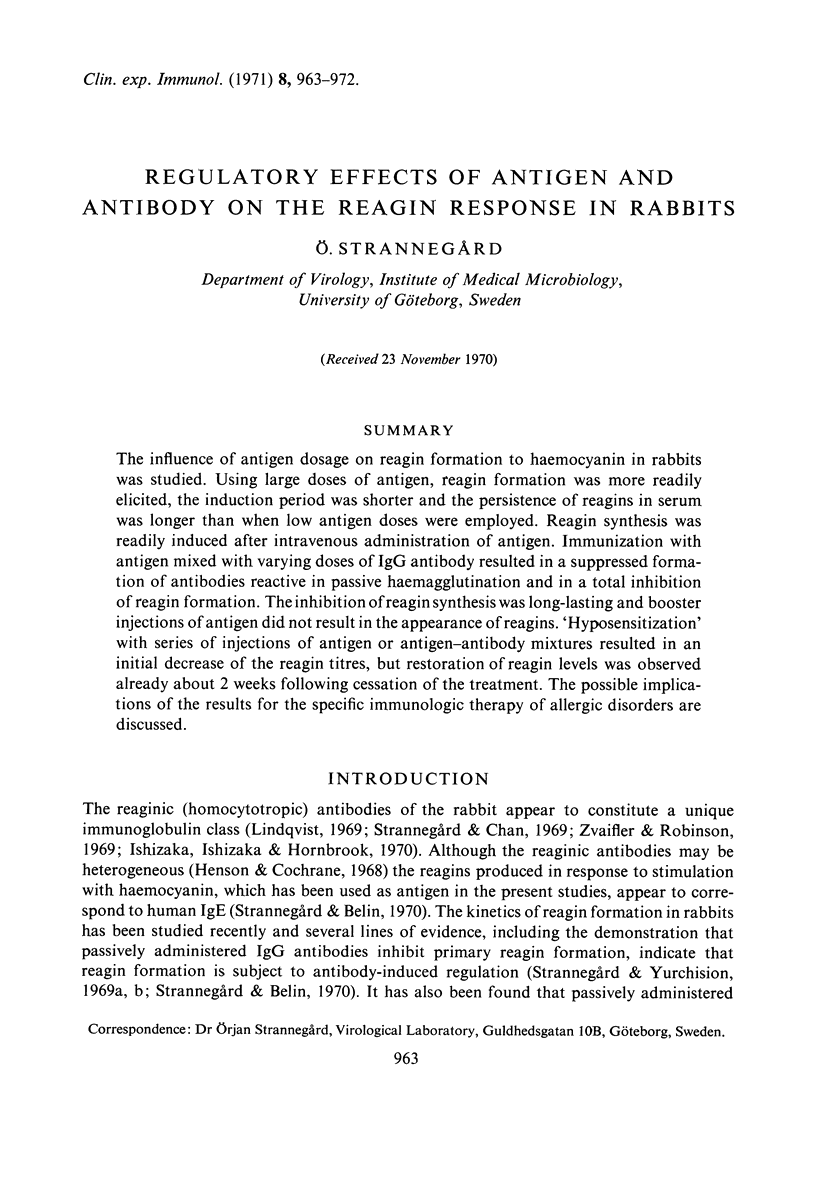
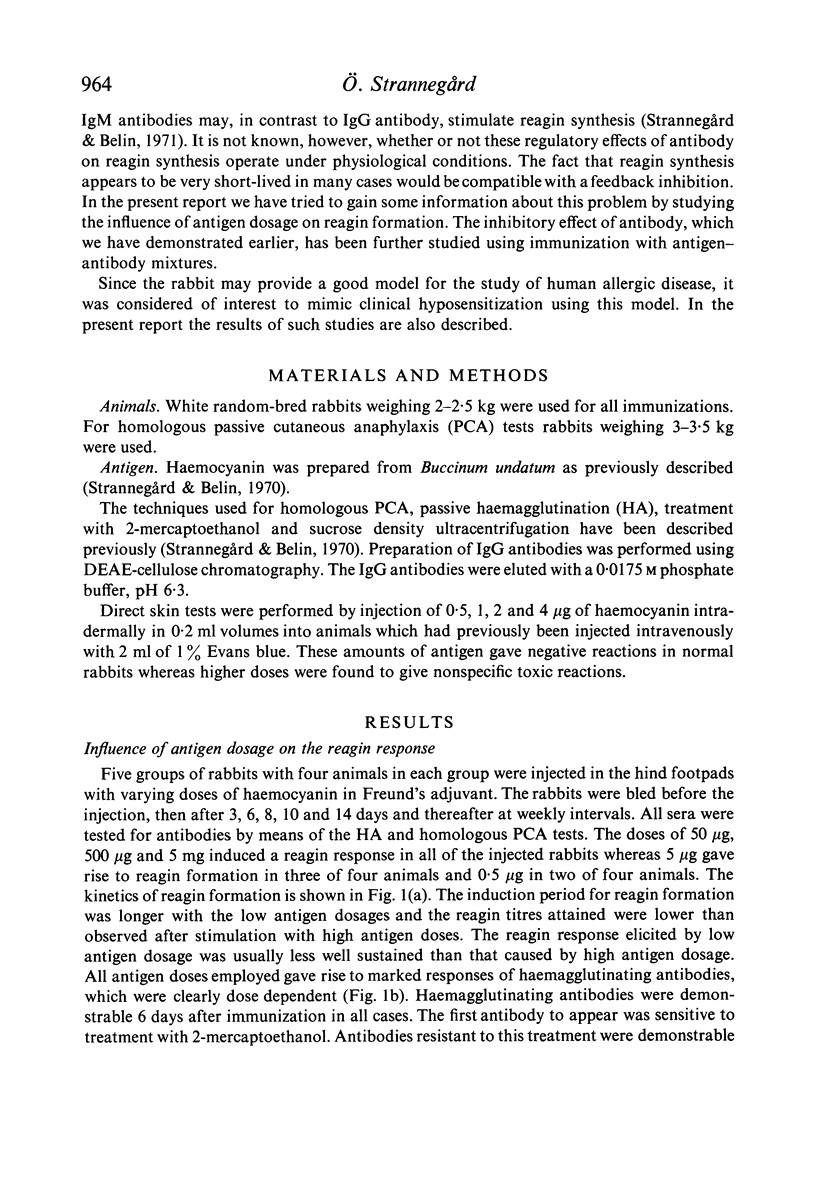
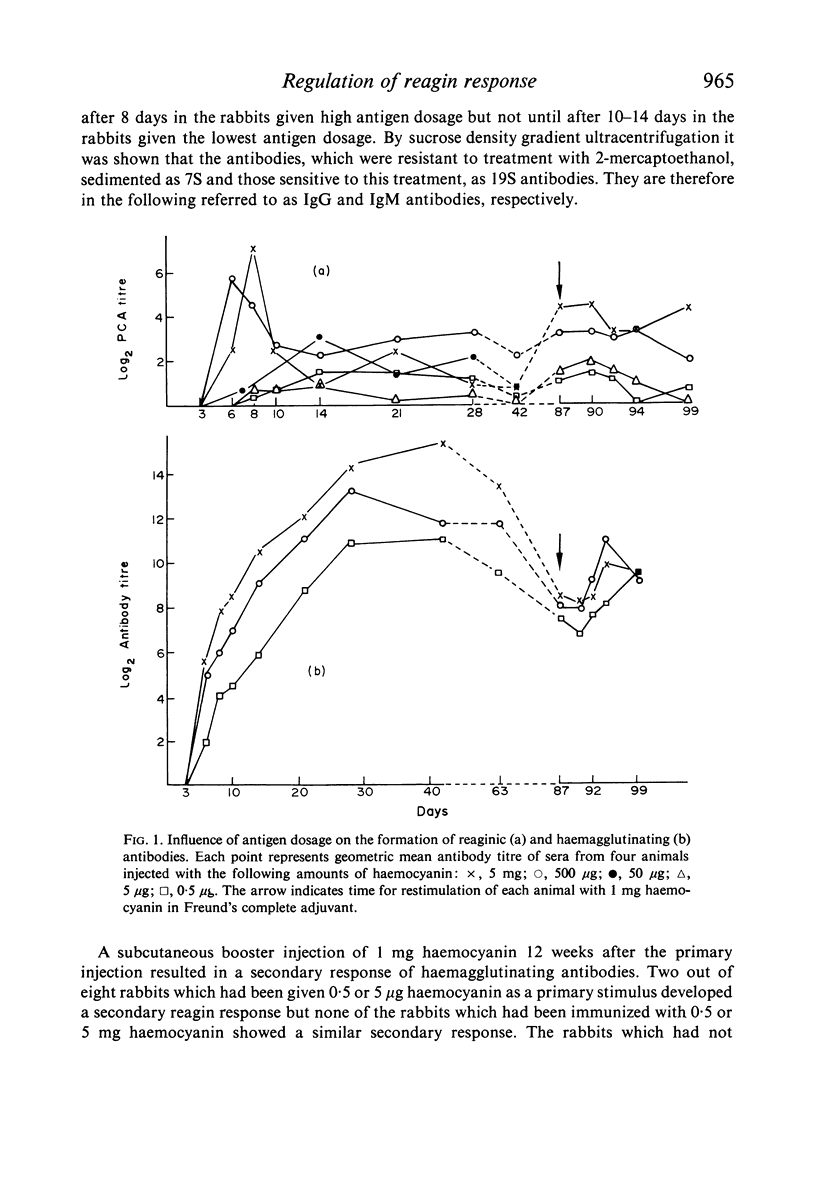

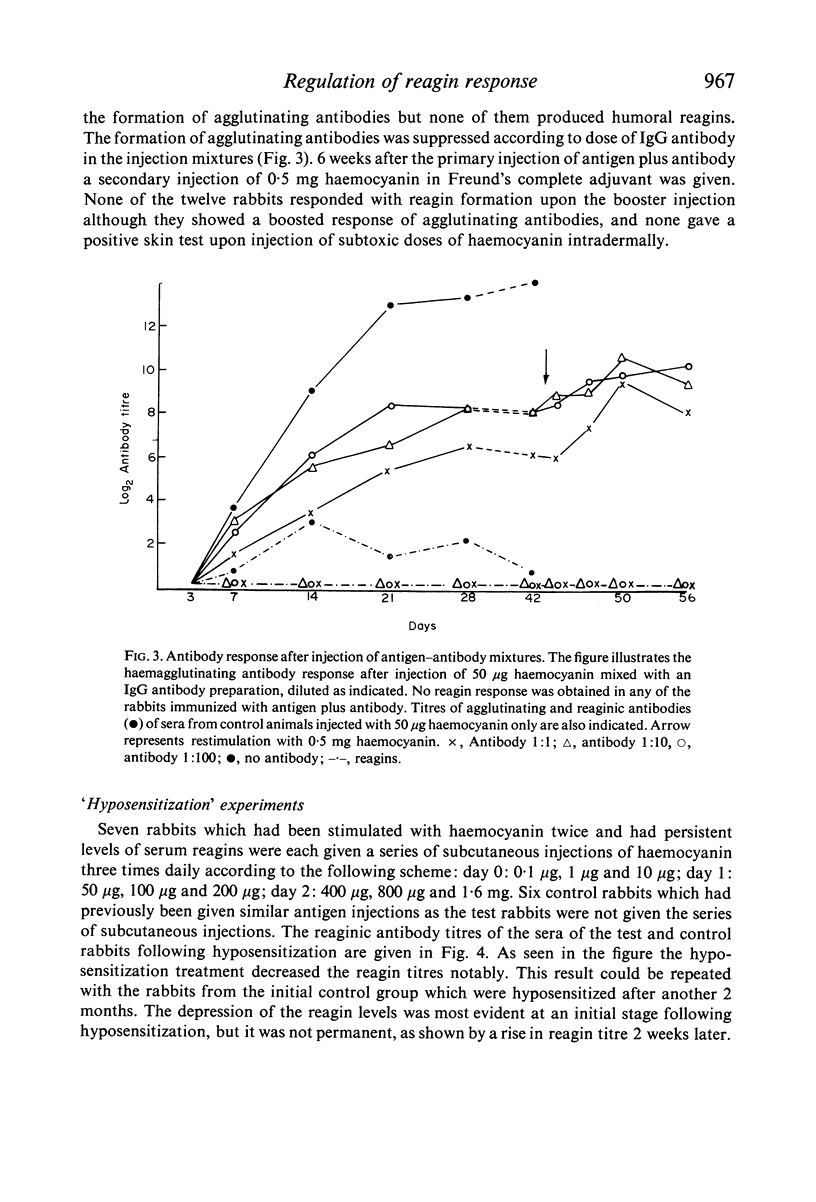
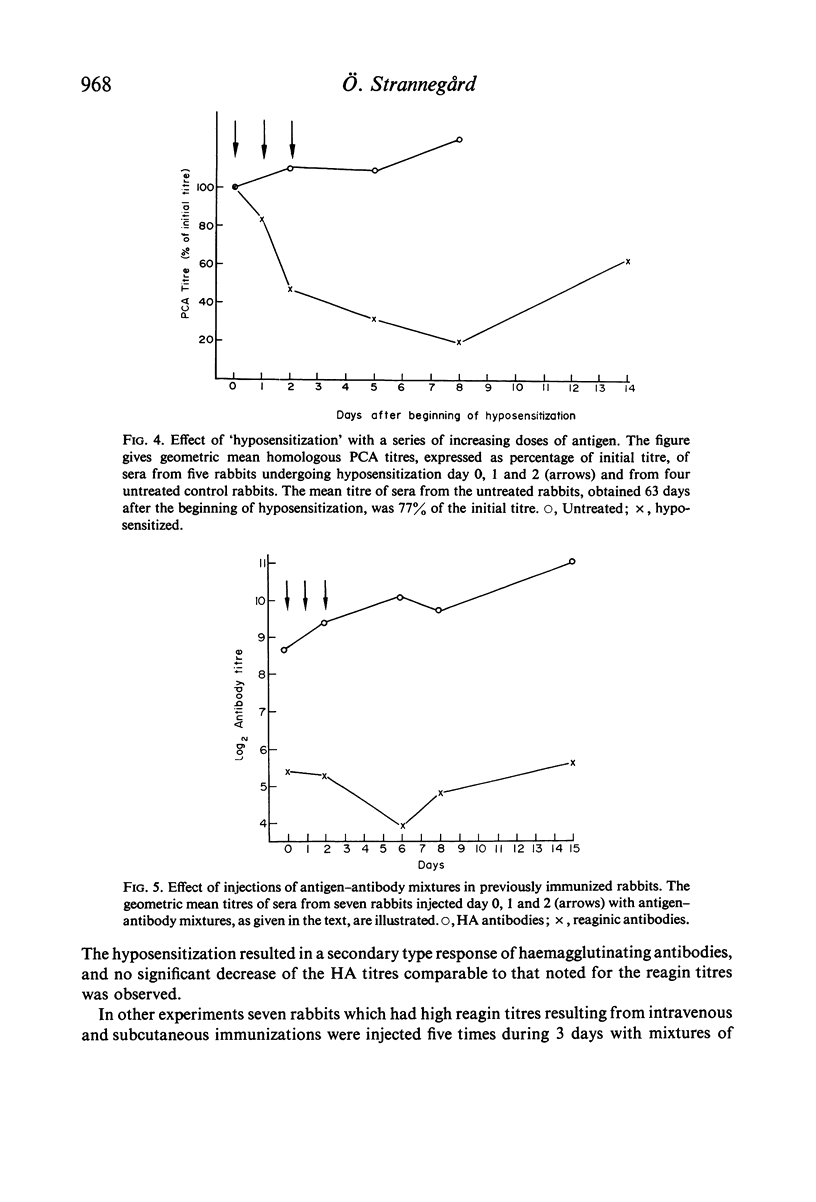
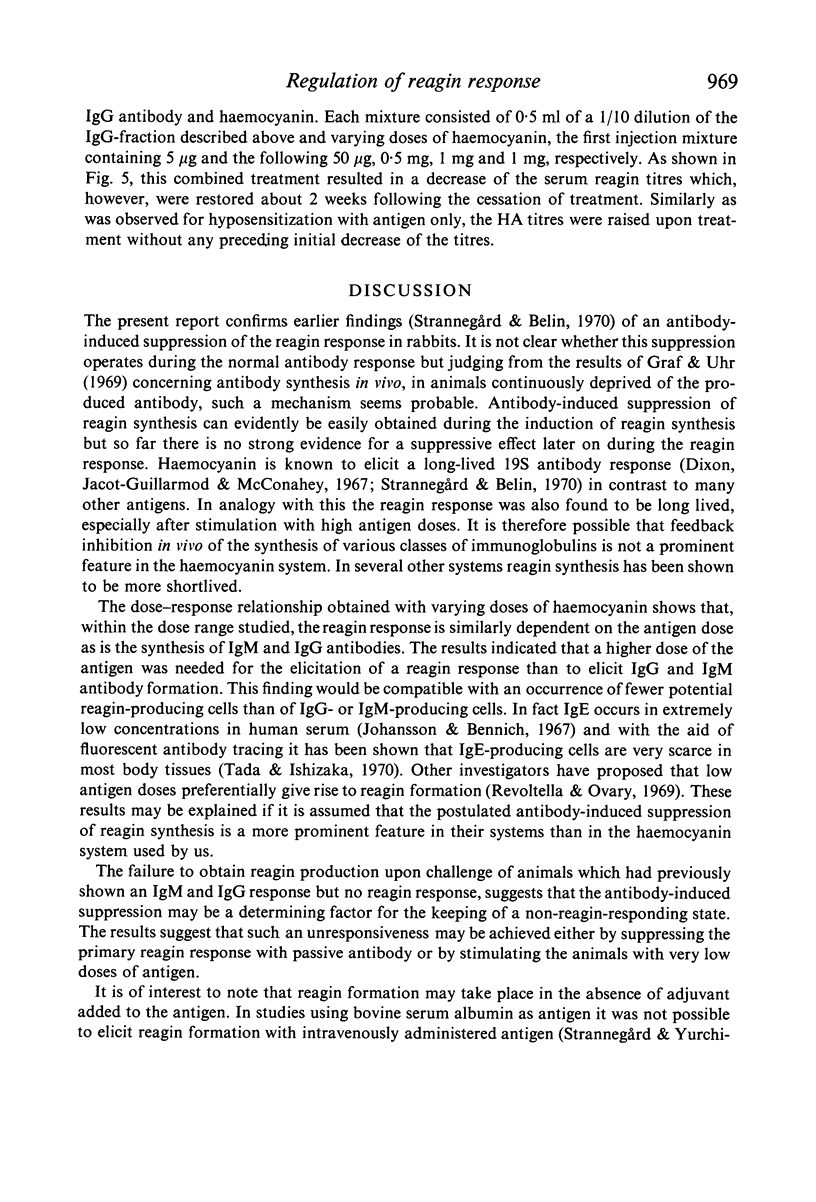
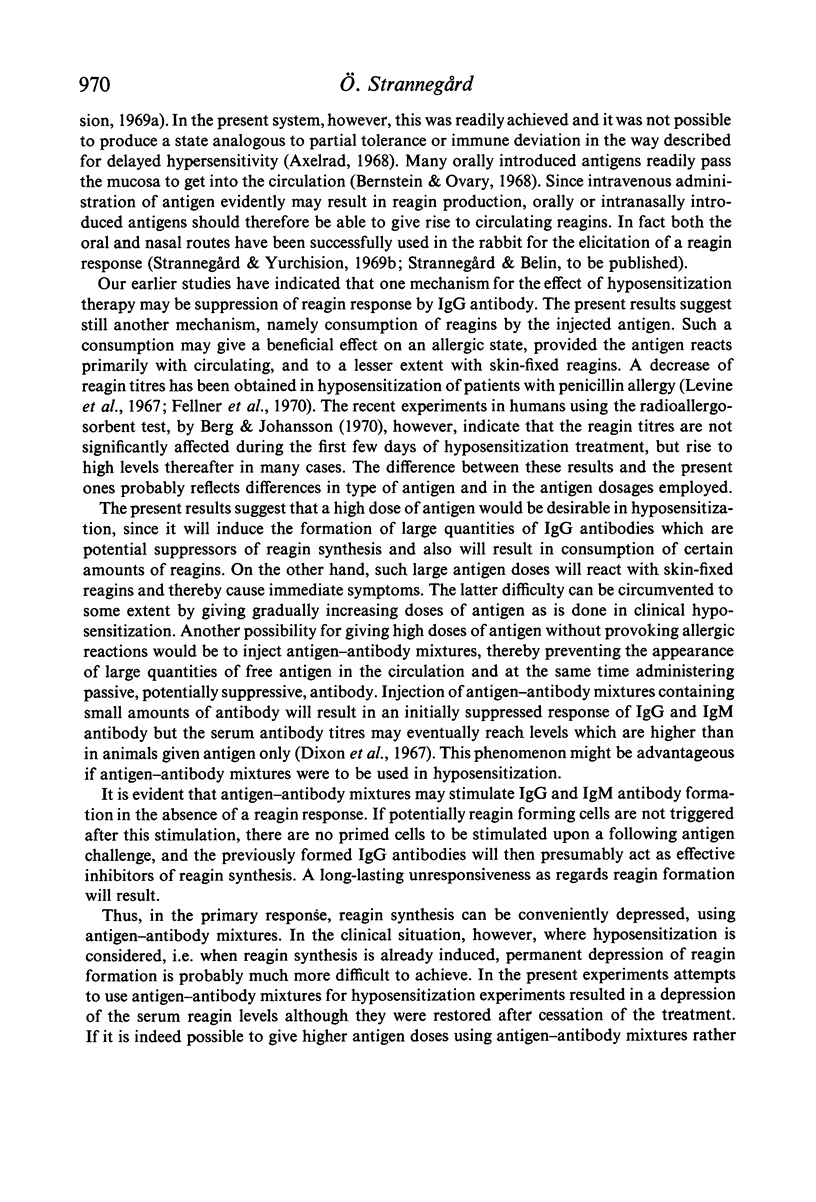
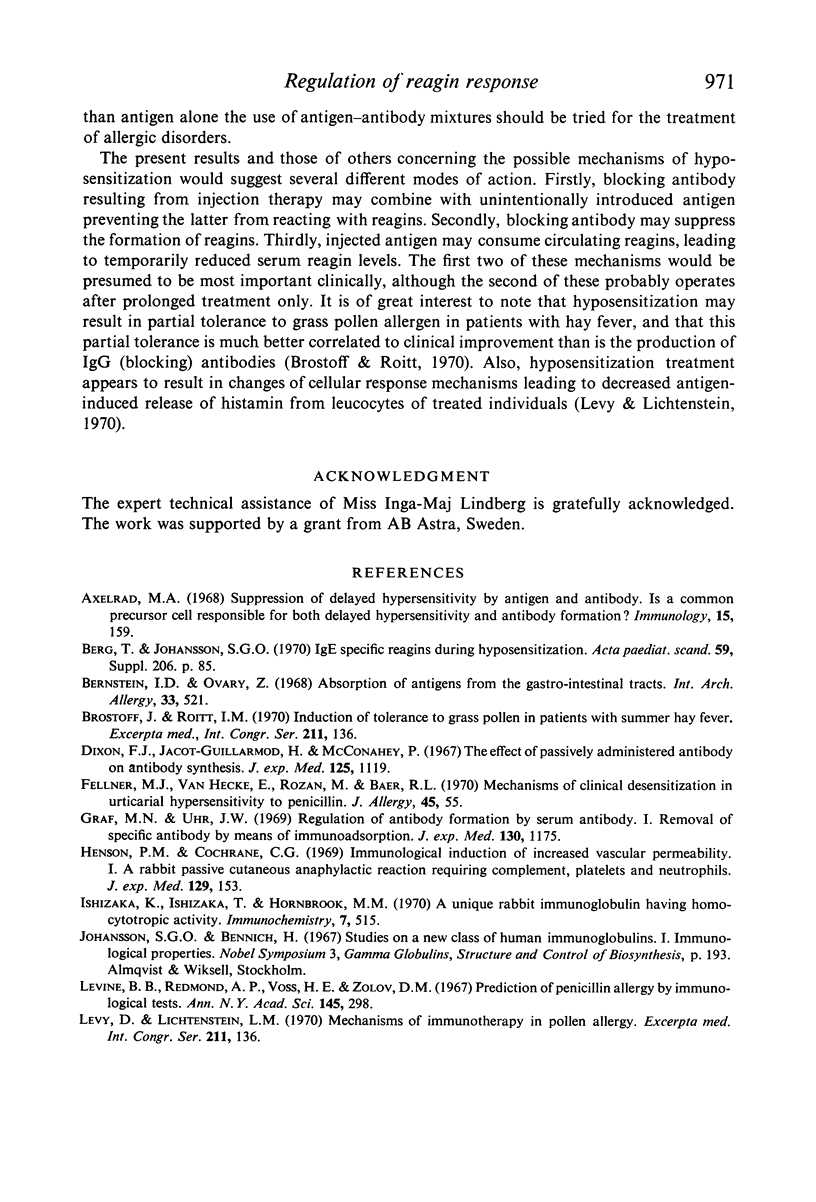
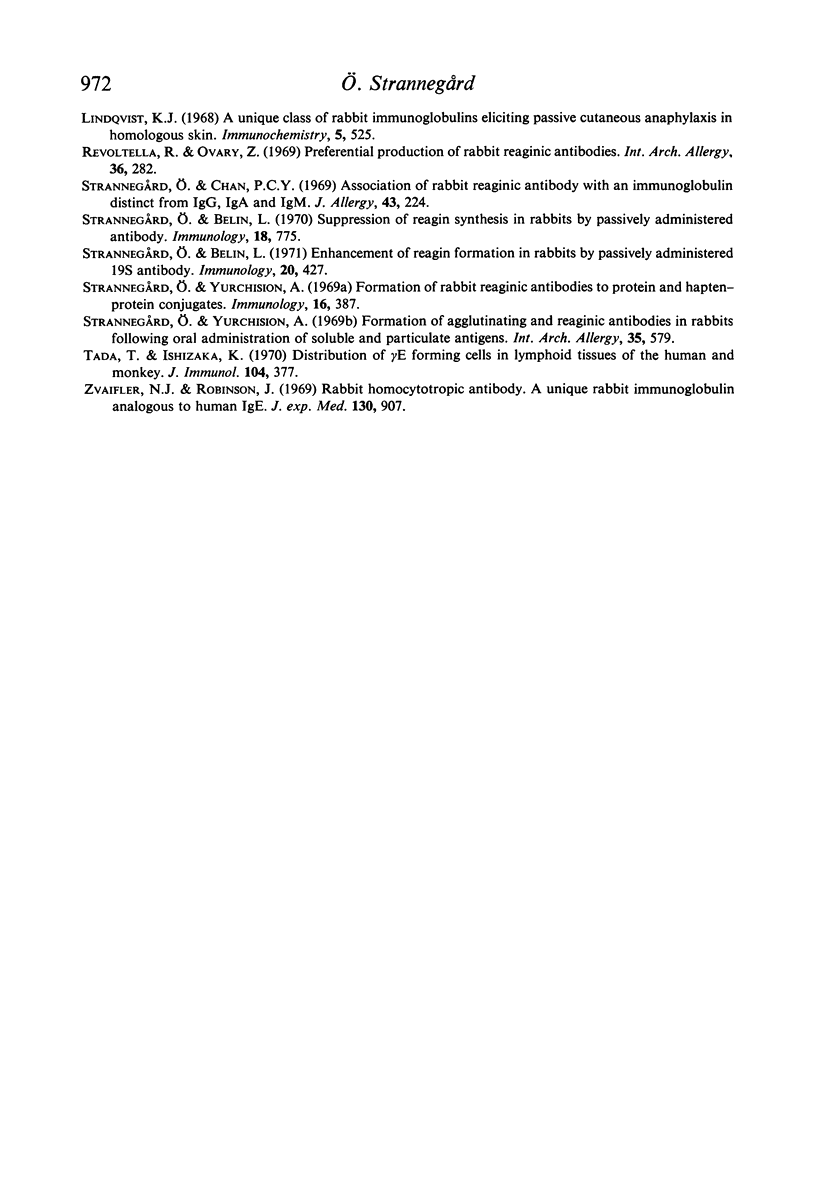
Selected References
These references are in PubMed. This may not be the complete list of references from this article.
- Axelrad M. A. Suppression of delayed hypersensitivity by antigen and antibody. Is a common precursor cell responsible for both delayed hypersensitivity and antibody formation? Immunology. 1968 Aug;15(2):159–171. [PMC free article] [PubMed] [Google Scholar]
- Berg T., Johansson S. G. IgE specific reagins during hyposensitization. Acta Paediatr Scand Suppl. 1970;206(Suppl):85–85. doi: 10.1111/j.1651-2227.1970.tb14605.x. [DOI] [PubMed] [Google Scholar]
- Bernstein I. D., Ovary Z. Absorption of antigens from the gastrointestinal tract. Int Arch Allergy Appl Immunol. 1968;33(6):521–527. doi: 10.1159/000230068. [DOI] [PubMed] [Google Scholar]
- Dixon F. J., Jacot-Guillarmod H., McConahey P. J. The effect of passively administered antibody on antibody synthesis. J Exp Med. 1967 Jun 1;125(6):1119–1135. doi: 10.1084/jem.125.6.1119. [DOI] [PMC free article] [PubMed] [Google Scholar]
- Fellner M. J., Van Hecke E., Rozan M., Baer R. L. Mechanisms of clinical desensitization in urticarial hypersensitivity to penicillin. J Allergy. 1970 Jan;45(1):55–61. doi: 10.1016/0021-8707(70)90017-1. [DOI] [PubMed] [Google Scholar]
- Graf M. W., Uhr J. W. Regulation of antibody formation by serum antibody. I. Removal of specific antibody by means of immunoadsorption. J Exp Med. 1969 Nov 1;130(5):1175–1186. doi: 10.1084/jem.130.5.1175. [DOI] [PMC free article] [PubMed] [Google Scholar]
- Henson P. M., Cochrane C. G. Immunological induction of increased vascular permeability. I. A rabbit passive cutaneous anaphylactic reaction requiring complement, platelets, and neutrophils. J Exp Med. 1969 Jan 1;129(1):153–165. doi: 10.1084/jem.129.1.153. [DOI] [PMC free article] [PubMed] [Google Scholar]
- Ishizaka K., Ishizaka T., Hornbrook M. M. A unique rabbit immunoglobulin having homocytotropic antibody activity. Immunochemistry. 1970 Jun;7(6):515–528. doi: 10.1016/0019-2791(70)90273-9. [DOI] [PubMed] [Google Scholar]
- Levine B. B., Redmond A. P., Voss H. E., Zolov D. M. Prediction of penicillin allergy by immunological tests. Ann N Y Acad Sci. 1967 Sep 27;145(2):298–309. doi: 10.1111/j.1749-6632.1967.tb50227.x. [DOI] [PubMed] [Google Scholar]
- Lindqvist K. J. A unique class of rabbit immunoglobulins eliciting passive cutaneous anaphylaxis in homologous skin. Immunochemistry. 1968 Nov;5(6):525–542. doi: 10.1016/0019-2791(68)90089-x. [DOI] [PubMed] [Google Scholar]
- Revoltella R., Ovary Z. Preferential production of rabbit reaginic antibodies. Int Arch Allergy Appl Immunol. 1969;36(3):282–289. doi: 10.1159/000230749. [DOI] [PubMed] [Google Scholar]
- Strannegård O., Belin L. Enhancement of reagin formation in rabbits by passively administered 19S antibody. Immunology. 1971 Mar;20(3):427–431. [PMC free article] [PubMed] [Google Scholar]
- Strannegård O., Belin L. Suppression of reagin synthesis in rabbits by passively administered antibody. Immunology. 1970 May;18(5):775–785. [PMC free article] [PubMed] [Google Scholar]
- Strannegård O., Chan P. C. Association of rabbit reaginic antibody with an immunoglobulin distinct from IgG, IgA, and IgM. J Allergy. 1969 Apr;43(4):224–230. doi: 10.1016/0021-8707(69)90065-3. [DOI] [PubMed] [Google Scholar]
- Strannegård O., Yurchision A. Formation of agglutinating and reaginic antibodies in rabbits following oral administration of soluble and particulate antigens. Int Arch Allergy Appl Immunol. 1969;35(6):579–590. doi: 10.1159/000230211. [DOI] [PubMed] [Google Scholar]
- Strannegård O., Yurchision A. Formation of rabbit reaginic antibodies to protein and hapten-protein conjugates. Immunology. 1969 Mar;16(3):387–397. [PMC free article] [PubMed] [Google Scholar]
- Tada T., Ishizaka K. Distribution of gamma E-forming cells in lymphoid tissues of the human and monkey. J Immunol. 1970 Feb;104(2):377–387. [PubMed] [Google Scholar]
- Zvaifler N. J., Robinson J. O. Rabbit homocytotropic antibody. A unique rabbit immunoglobulin analogous to human IgE. J Exp Med. 1969 Oct 1;130(4):907–929. doi: 10.1084/jem.130.4.907. [DOI] [PMC free article] [PubMed] [Google Scholar]


